Suwon Yeongdong Market (수원 영동시장)
6.9Km 32354 2022-07-27
6, Suwoncheon-ro 255beon-gil, Paldal-gu, Suwon-si, Gyeonggi-do
+82-31-251-0171
The neighborhood around Paldalmun Gate serves as the main business district of Suwon, where more than 300 stores and stalls are joined to make a large market. The atmosphere and the physical surroundings help to both keep traditions alive and move into the modern age, which is one of the main aspects of this market that draws in more visitors each year. Since 1917 when the market first opened to the public, the vendors here have specialized in traditional garments, including hanbok (traditional Korean clothes) and accessories. Among 300 stores, 40 stores feature finished hanbok, another 40 stores sell fabric, 70 stores are general clothing store, and the remaining stores sell daily goods, accessories, agricultural and stockbreeding products. In the past, the market was the largest market south of the metropolitan area so people from Suwon, Pyeongtaek, Hwaseong, and Osan frequently visited. An on-going maintenance project to keep the originality of the market began in 2002 and the market now features modernized facilities.
Korean Folk Village - Yongin Branch [Tax Refund Shop] (한국민속촌 용인)
6.9Km 2 2024-04-19
90, Minsokchon-ro, Giheung-gu, Yongin-si, Gyeonggi-do
-
Temporary Palace at Hwaseong Fortress (Hwaseong Haenggung Palace) (화성행궁)
6.9Km 82788 2022-04-08
825, Jeongjo-ro, Paldal-gu, Suwon-si, Gyeonggi-do
+82-31-228-4677
A haenggung is a temporary palace where the king and royal family retreated to during a war. Hwaseong Haenggung Palace is the largest one of these, used by the Joseon kings since the time of King Jeongjo (r. 1776-1800). In addition to being used as a shelter during war, King Jeongjo also stayed here during trips to worship at his father's tomb. The palace was the location of a splendid feast held on the 60th birthday of his mother, Hyegyeonggung Hong, and many other events, including award certificates for successful candidates of special national exams. These days, the palace serves as a venue for many traditional cultural performances and activities.
Hwaseong Fortress Tourist Trolley (화성어차)
6.9Km 22380 2024-03-20
825 Jeongjo-ro, Paldal-gu, Suwon-si, Gyeonggi-do
+82-31-228-4686
With a design inspired by the royal vehicle used by King Gojong and palanquins of the Joseon dynasty, Hwaseong Fortress Tourist Trolley provides visitors with a comfortable tour around the main attractions of Suwon Hwaseong Fortress. It is divided into a sightseeing course that starts at Hwaseong Haenggung Palace and visits the main gates, and a circular course that starts at Yeonmudae Post and visits the main military facilities. Reservations are required on the website. All seats are equipped with an earphone jack offering an audio guide of Suwon Hwaseong Fortress in English, Chinese and Japanese.
Suwon Culture Night (수원 문화재 야행)
6.9Km 18638 2022-07-01
825, Jeongjo-ro, Paldal-gu, Suwon-si, Gyeonggi-do
• 1330 Travel Hotline: +82-2-1330 (Korean, English, Japanese, Chinese) • For more info: +82-31-3572~5
Suwon Hwaseong Fortress and Hwaseong Temporary Palace are the venue for Suwon Culture Night. Both areas are decorated with media art of eight night experiences. Every corner of the fortress road has history and stories to offer a historical culture experience.
Korean Folk Village (한국민속촌)
6.9Km 456113 2024-01-09
90 Minsokchon-ro, Giheung-gu, Yongin-si, Gyeonggi-do
Korean Folk Village introduces traditional culture from the late Joseon period to both local and international visitors through cultural classes experience, shaman faith, seasonal customs and others. It recreated the past through the restoration of houses from the Joseon dynasty.
Performances including folk music, martial arts on horseback, traditional wedding ceremony, and other special performances and events are available by season. In particular, "Welcome to Joseon," an event held every May, takes visitors back to the past. In addition, a family-friendly theme park equipped with 15 exciting attractions is also available. Visitors can also try various Korean foods at the market street.
Nature Republic - Suwon Nammun Branch [Tax Refund Shop] (네이처리퍼블릭 수원남문점)
6.9Km 0 2024-04-19
2, Paldalmun-ro, Paldal-gu, Suwon-si, Gyeonggi-do
-
Suwon Hwaseong Special Tourist Zone (수원화성 관광특구)
7.0Km 4179 2024-02-28
780 Jeongjo-ro, Paldal-gu, Suwon-si, Gyeonggi-do
Hwaseong Fortress, Suwon, was built by King Jeongjo, the 22nd ruler of the Joseon dynasty, when he moved the tomb of his father, Crown Prince Sado, to Hwasan Mountain in Suwon. Because of its high historical and cultural value, it was designated as a UNESCO World Heritage Site in 1997. In 2016, the Hwaseong Fortress area, ranging from Paldalsan Mountain to Jangan Park, Yeonmudae Command Post, and Paldalmun Market, was designated as a special tourist zone, establishing itself as a representative tourist destination in Suwon visited by many tourists.
Paldalmun Gate (팔달문)
7.0Km 32378 2021-01-29
780, Jeongjo-ro, Paldal-gu, Suwon-si, Gyeonggi-do
+82-31-228-2765
Paldalmun Gate is the southern gate of Hwaseong Fortress, and its name means "a gate opening to a road that leads to all directions." Among the four gates of Hwaseong Fortress, the northern and southern gates are bigger and more grandiose. The gate has an entrance wide enough to let the king's palanquin pass through and a watchtower over the entrance. Outside of the gate is a crescent-shaped protection wall called ongseong.
Among the ongseong walls found across the country, Paldalmun Gate's ongseong wall stands out in terms of size and form. The hip roof and decorations seen on Paldalmun Gate's watchtower resemble that of fortress watchtowers, and are recognized as representation of late Joseon dynasty's watchtower architecture.
24 Martial Arts Trial Performance (무예24기 시범공연)
7.0Km 11803 2021-06-07
825, Jeongjo-ro, Paldal-gu, Suwon-si, Gyeonggi-do
• 1330 Travel Hotline: +82-2-1330 (Korean, English, Japanese, Chinese) • For more info: +82-31-267-1644
24 Martials Arts (Muye 24-gi in Korean) refers to the 24 martial art techniques in the Muyedobotongji (Comprehensive Illustrated Manual of Martial Arts). The manual was compiled in 1790 by Confucian scholars Lee Deok-mu and Park Jae-ga, along with the martial arts expert Baek Dong-su, under the orders of King Jeongjo (22nd ruler of the Joseon dynasty). Regarded as a resource for understanding the nature of Korean military science, the manual is an exemplary martial arts compilation that was organized into 24 techniques by adopting the traditional martial arts of Joseon, as well as China and Japan.
The 24 Martial Arts were practiced by the soldiers of the outer military unit of Jangyongyeong, the most elite military troop during the Joseon dynasty. Soldiers stationed at the northern and southern military camps of the Hwaseong Temporary Palace practiced these techniques to effectively guard the palace. It is considered as a significant intangible heritage because of its great historical, artistic, and athletic values. With the restoration of the temporary palace, a regular event is being held to demonstrate the 24 Martial Arts.
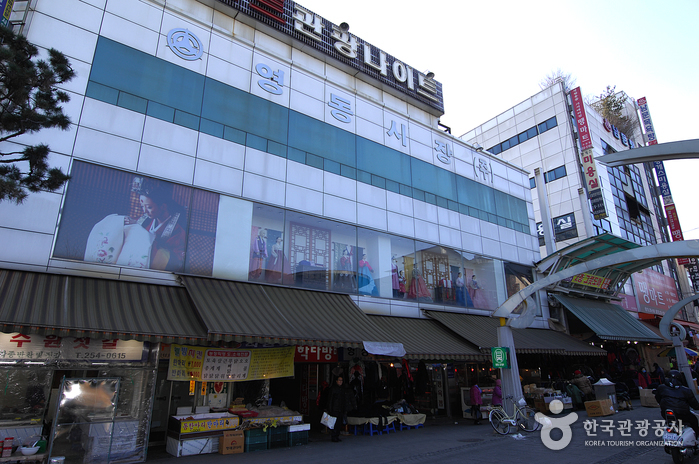
![Korean Folk Village - Yongin Branch [Tax Refund Shop] (한국민속촌 용인)](http://tong.visitkorea.or.kr/cms/resource/52/2888752_image2_1.jpg)
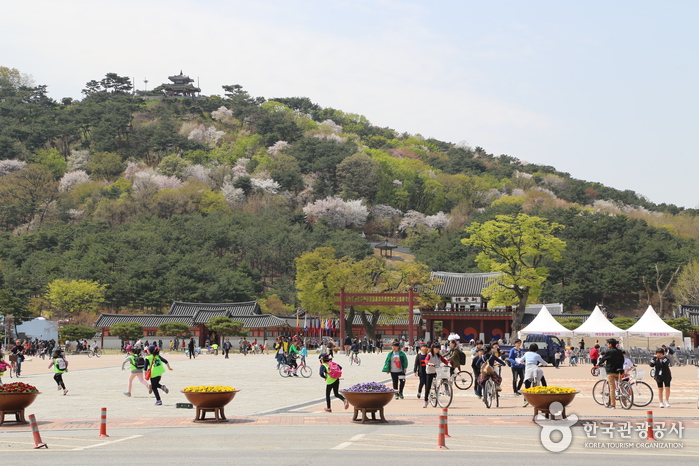

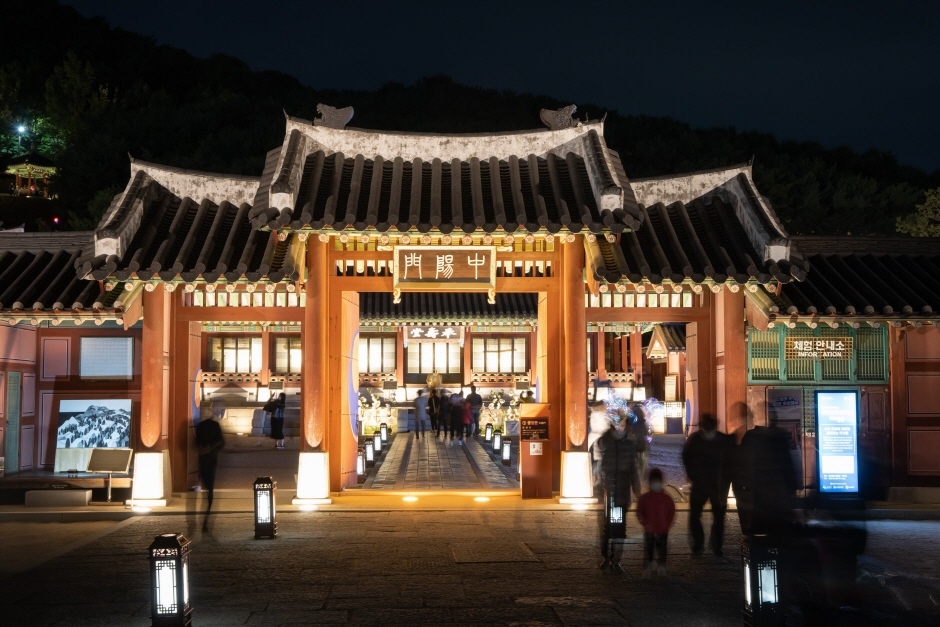
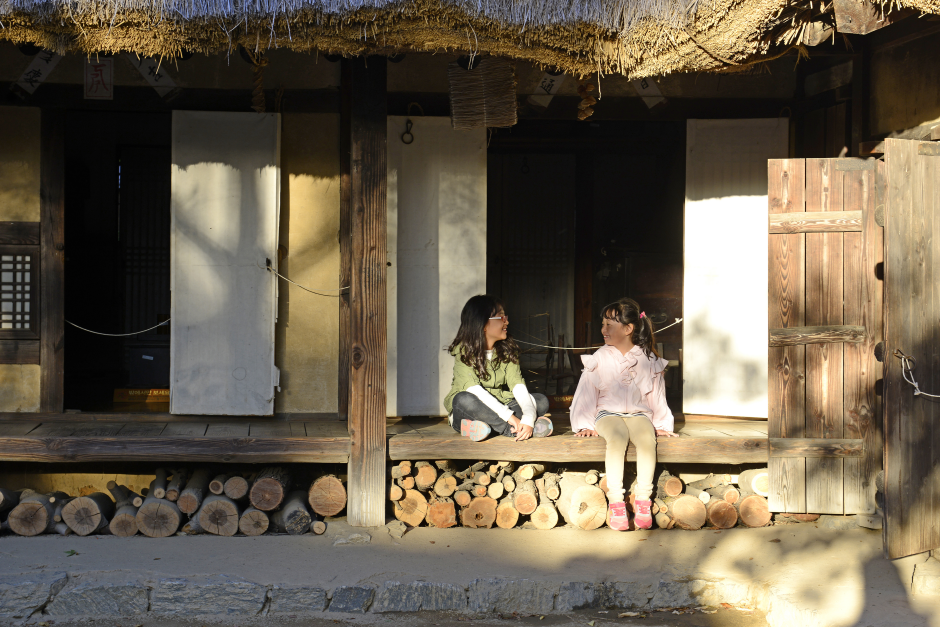
![Nature Republic - Suwon Nammun Branch [Tax Refund Shop] (네이처리퍼블릭 수원남문점)](http://tong.visitkorea.or.kr/cms/resource/57/2887757_image2_1.jpg)
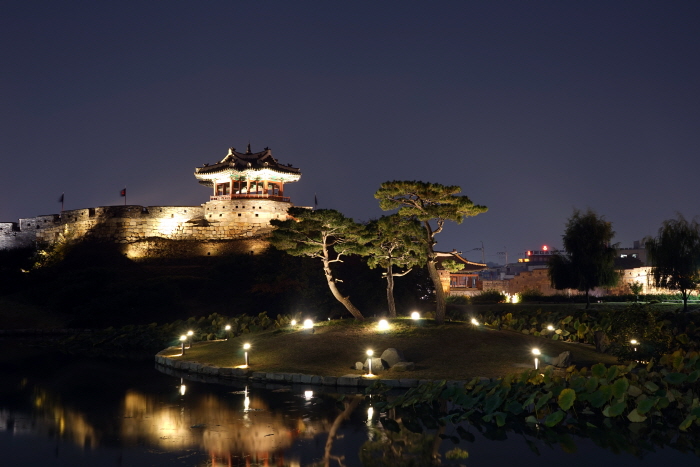
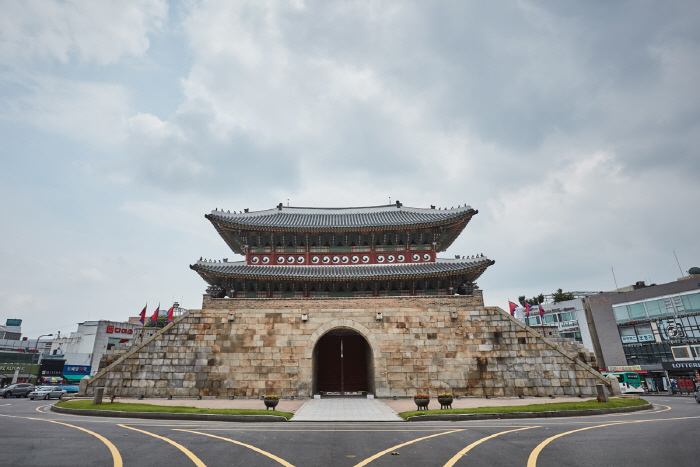
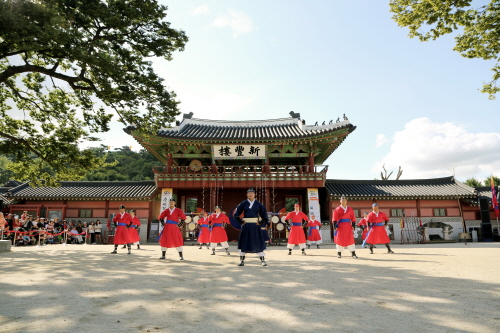
 English
English
 한국어
한국어 日本語
日本語 中文(简体)
中文(简体) Deutsch
Deutsch Français
Français Español
Español Русский
Русский